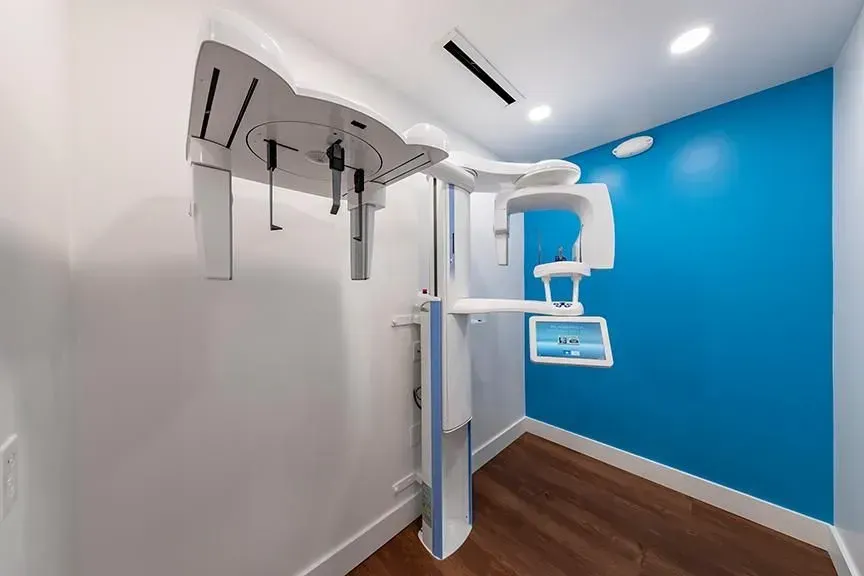Dental Bonding
Dental Bonding In Winter Park, Fl

The Ultimate Guide to Dental Bonding: Everything You Need to Know
Introduction
Dental bonding is a versatile cosmetic dental procedure that has gained significant popularity in recent years. Whether it's fixing chipped, cracked, or discolored teeth, or even closing small gaps between teeth, dental bonding offers a non-invasive and cost-effective solution. In this comprehensive guide, we will delve into everything you need to know about dental bonding, including its process, benefits, drawbacks, cost, and aftercare. Whether you're considering this procedure for yourself or just curious to learn more, let's explore the world of dental bonding together.
What is Dental Bonding?
Dental bonding, also known as composite bonding or tooth bonding, is a cosmetic dental procedure where a tooth-colored resin material is applied to the surface of the tooth and then hardened with a special light. This material is carefully sculpted and shaped to match the natural contours of the tooth, resulting in a seamless and natural-looking restoration.
The Dental Bonding Process
The dental bonding process typically begins with a consultation with your dentist to discuss your goals and expectations. Once a treatment plan is established, the actual bonding procedure can usually be completed in a single visit to the dentist's office. First, the tooth surface is prepared by roughening it slightly and applying a conditioning liquid to help the bonding material adhere properly. Then, the tooth-colored resin is applied, molded, and shaped to achieve the desired result. A special light is used to harden the resin, and final adjustments may be made to ensure a perfect fit and appearance. Finally, the bonded tooth is polished to blend seamlessly with the rest of the smile.
Benefits of Dental Bonding
Dental bonding offers numerous benefits that make it a popular choice for addressing various cosmetic dental concerns. One of the primary advantages of bonding is its versatility – it can be used to repair a wide range of dental issues, including chipped, cracked, or stained teeth, as well as to close small gaps between teeth. Additionally, dental bonding is a minimally invasive procedure that typically requires little to no removal of the natural tooth structure, making it a conservative option for smile enhancement. Furthermore, bonding is usually more affordable than other cosmetic treatments such as porcelain veneers or dental crowns, making it accessible to a wider range of patients.
Drawbacks and Limitations of Dental Bonding
While dental bonding offers many benefits, it's important to consider its drawbacks and limitations as well. One potential downside of bonding is its durability – while the bonded material is strong and resilient, it may not last as long as other restorative options such as veneers or crowns. Additionally, bonding material can stain over time, especially if exposed to foods and beverages that are known to cause discoloration. Furthermore, bonding may not be suitable for large restorations or cases where significant structural reinforcement is needed.
Cost of Dental Bonding
The cost of dental bonding can vary depending on factors such as the complexity of the case, the dentist's experience and expertise, and the geographic location of the dental practice. On average, dental bonding typically ranges from $100 to $400 per tooth. It's important to keep in mind that while bonding may be more affordable upfront compared to other cosmetic treatments, it may require maintenance or replacement over time, which can incur additional costs.
Aftercare and Maintenance
Proper aftercare and maintenance are essential for ensuring the longevity and success of dental bonding. While bonded teeth do not require any special care beyond regular oral hygiene practices such as brushing, flossing, and routine dental check-ups, it's important to avoid habits that could potentially damage the bonded material, such as biting on hard objects or using teeth as tools. Additionally, regular professional cleanings and exams can help monitor the condition of the bonded teeth and address any issues before they escalate.
Conclusion
In conclusion, dental bonding is a versatile and cost-effective cosmetic dental procedure that can help enhance the appearance of your smile. Whether you're looking to fix a chipped tooth, close a gap, or improve the overall aesthetics of your smile, bonding offers a simple and effective solution. By understanding the process, benefits, drawbacks, and aftercare involved with dental bonding, you can make an informed decision about whether this procedure is right for you. Consult with your dentist to explore your options and take the first step towards achieving the smile of your dreams with dental bonding.
How The Procedure Works
Firstly Dr (insert name here) will use a shade guide to color match the resin so that it blends in with your natural teeth. The surface of the tooth is lightly etched and coated with a small amount of adhesive liquid which helps the bonding material to stick. Once the material is applied it's molded and shaped to match the teeth perfectly. Then using a curing light the resin is hardened. Finally it's trimmed, smoothed, and polished. The entire process is painless and should take somewhere between 30 minutes and 1 hour to complete.
Post Treatment
After treatment patients should avoid any food or drinks that stain for at least 48 hours. This is while the resin fully hardens. This includes red wine, coffee, and tea. Further instructions on what to expect both during and after treatment, will be discussed with you during a consultation with Dr (insert name here).
